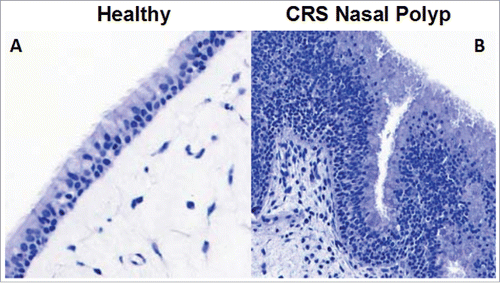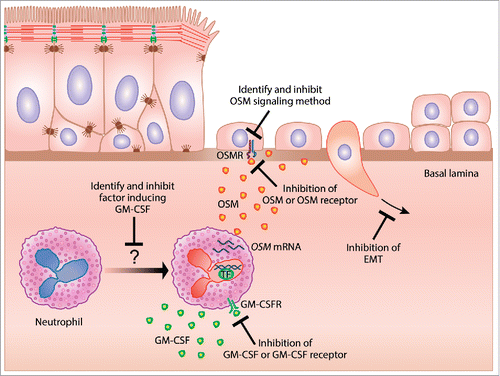Figures & data
Figure 1. Epithelial morphology is abnormal in nasal polyps from CRS patients. Healthy nasal epithelium is a highly organized structure with undifferentiated progenitor cells along the basement membrane, and the differentiated cells, ciliated and goblet cells along the apical edge (A). However, in CRS the epithelium often has a large expansion of basal cells and is highly disorganized, which could lead to barrier dysfunction (B).

Figure 2. Hypothetical mechanism of repair and potential therapeutic strategies for epithelial barrier restoration in the treatment of type 2 iflammatory disease. GM-CSF induces neutrophil derived OSM, which can mediate epithelial barrier dysfunction through the induction of EMT. Several potential mechanisms aimed at restoring epithelial barrier function for the treatment of type 2 inflammatory diseases are identified.

